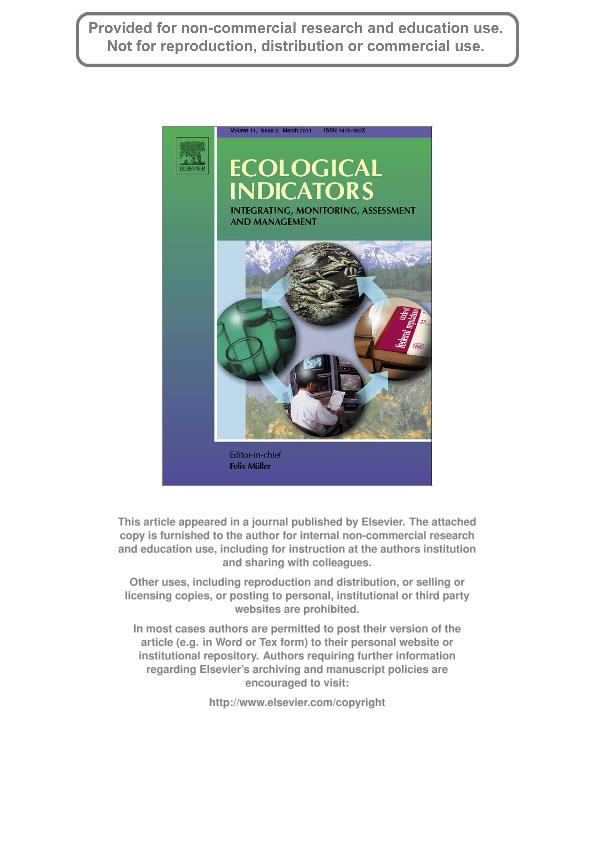Artículo
Combined methods to detect pollution effects on shell shape and structure in Neogastropods
Fecha de publicación:
03/2011
Editorial:
Elsevier Science
Revista:
Ecological Indicators
ISSN:
1470-160X
Idioma:
Inglés
Tipo de recurso:
Artículo publicado
Clasificación temática:
Resumen
Tributyltin (TBT) has been widely used as antifouling in marine environments, producing imposex in gastropod females (i.e. neoformation of a vas deferens and/orapenis) and shell malformation sinbivalves. However, effects of TBT and other pollutants from high marine traffic zones on the shell of gastropods have been little explored. Shell shape in volutids Odontocymbiola magellanica from a harbor polluted site (P) has been compared with that of animals from a non-polluted location (NP) using 3D geometric morphometrics. Also, the microstructure and density of shells from both populations were analyzed. Prior studies madein the same area (Golfo Nuevo, Patagonia, Argentina) based on traditional multivariate morphometrics showedsome differences in size butwas unable to detect differences in shell shape among O. magellanica from P and NP areas. Departing from 3D geometric morphometrics, scanning electron microscopy (SEM) and computed tomography (CT) techniques, we have registered the presence of patent differences on shell shape and structure in animals from polluted (P) and non-polluted (NP) areas. In 100% of shells from the NP area we register three calcium carbonate layers (prismatic, cross lamellar and amorphous) and higher densities, while in 50% of the shells collected at the P area the external layer (amorphous) was lacking. Furthermore, a body weight loss of around 30% and a shell weight loss of 20% were registered in animals from the P area. Our combined results suggest that the coordinated use of 3D geometrics morphometrics, CT scan and SEM could be of great utility in order to detect the effect of environmental variables on Neogastropods shell shape and structure.
Archivos asociados
Licencia
Identificadores
Colecciones
Articulos(CCT-CENPAT)
Articulos de CTRO.CIENTIFICO TECNOL.CONICET - CENPAT
Articulos de CTRO.CIENTIFICO TECNOL.CONICET - CENPAT
Citación
Marquez, Federico; González José, Rolando; Bigatti, Gregorio; Combined methods to detect pollution effects on shell shape and structure in Neogastropods; Elsevier Science; Ecological Indicators; 11; 2; 3-2011; 248-254
Compartir
Altmétricas




